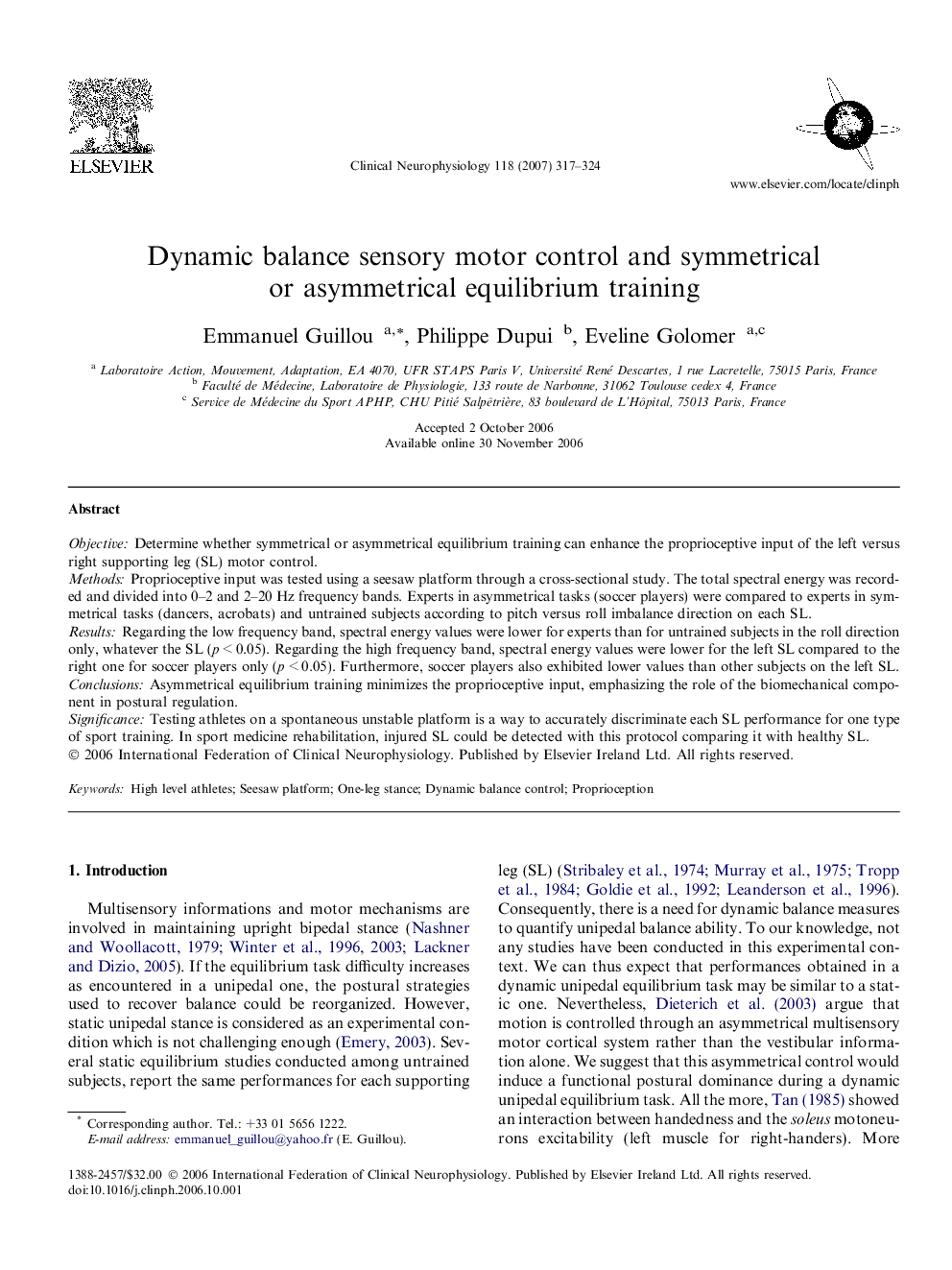| کد مقاله | کد نشریه | سال انتشار | مقاله انگلیسی | نسخه تمام متن |
|---|---|---|---|---|
| 3048013 | 1185070 | 2007 | 8 صفحه PDF | دانلود رایگان |

ObjectiveDetermine whether symmetrical or asymmetrical equilibrium training can enhance the proprioceptive input of the left versus right supporting leg (SL) motor control.MethodsProprioceptive input was tested using a seesaw platform through a cross-sectional study. The total spectral energy was recorded and divided into 0–2 and 2–20 Hz frequency bands. Experts in asymmetrical tasks (soccer players) were compared to experts in symmetrical tasks (dancers, acrobats) and untrained subjects according to pitch versus roll imbalance direction on each SL.ResultsRegarding the low frequency band, spectral energy values were lower for experts than for untrained subjects in the roll direction only, whatever the SL (p < 0.05). Regarding the high frequency band, spectral energy values were lower for the left SL compared to the right one for soccer players only (p < 0.05). Furthermore, soccer players also exhibited lower values than other subjects on the left SL.ConclusionsAsymmetrical equilibrium training minimizes the proprioceptive input, emphasizing the role of the biomechanical component in postural regulation.SignificanceTesting athletes on a spontaneous unstable platform is a way to accurately discriminate each SL performance for one type of sport training. In sport medicine rehabilitation, injured SL could be detected with this protocol comparing it with healthy SL.
Journal: Clinical Neurophysiology - Volume 118, Issue 2, February 2007, Pages 317–324